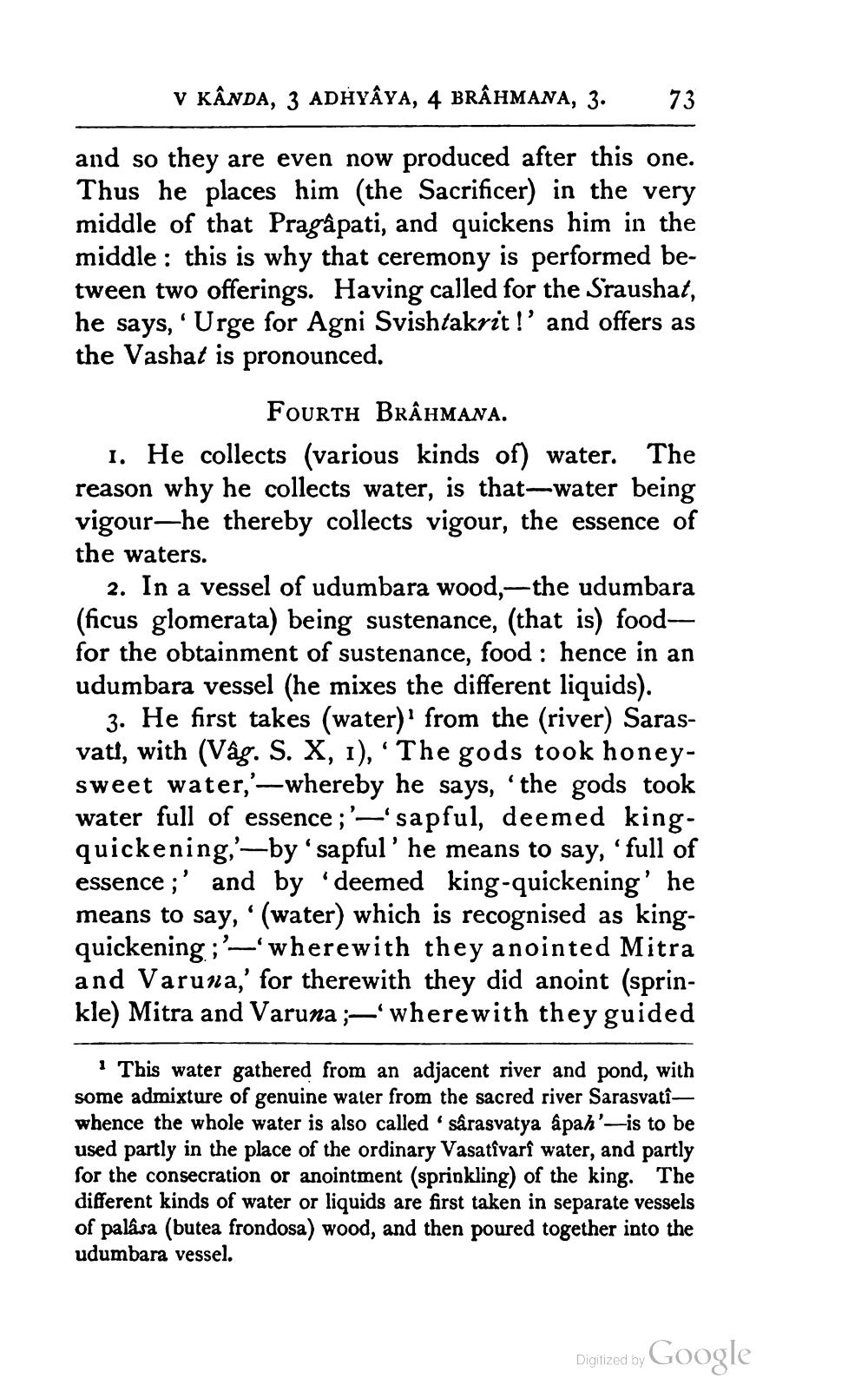________________
V KÂNDA, 3 ADHYAYA, 4 BRAHMANA, 3.
73
and so they are even now produced after this one.
Thus he places him (the Sacrificer) in the very middle of that Pragâpati, and quickens him in the middle: this is why that ceremony is performed between two offerings. Having called for the Sraushat, he says, ' Urge for Agni Svishtakrit !' and offers as the Vashat is pronounced.
Fourth BRAHMANA. 1. He collects (various kinds of) water. The reason why he collects water, is that-water being vigour-he thereby collects vigour, the essence of the waters.
2. In a vessel of udumbara wood,—the udumbara (ficus glomerata) being sustenance, (that is) foodfor the obtainment of sustenance, food : hence in an udumbara vessel (he mixes the different liquids).
3. He first takes (water)' from the (river) Sarasvati, with (Vâg. S. X, 1), 'The gods took honeysweet water,'—whereby he says, 'the gods took water full of essence;'—'sapful, deemed kingquickening,'—by'sapful’he means to say, 'full of essence ;' and by 'deemed king-quickening' he means to say, '(water) which is recognised as kingquickening ;'-'wherewith they anointed Mitra and Varuna,' for therewith they did anoint (sprinkle) Mitra and Varuna ;-'wherewith they guided
This water gathered from an adjacent river and pond, with some admixture of genuine water from the sacred river Sarasvatî— whence the whole water is also called sârasvatya ápah'-is to be used partly in the place of the ordinary Vasatîvarî water, and partly for the consecration or anointment (sprinkling) of the king. The different kinds of water or liquids are first taken in separate vessels of palása (butea frondosa) wood, and then poured together into the udumbara vessel.
Digitized by Google




